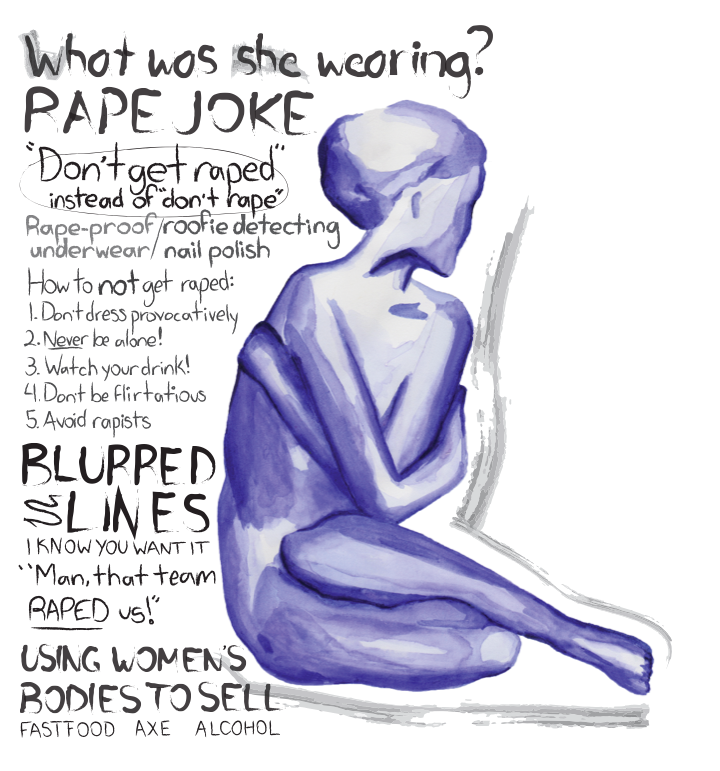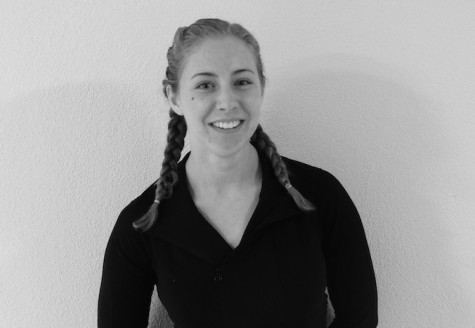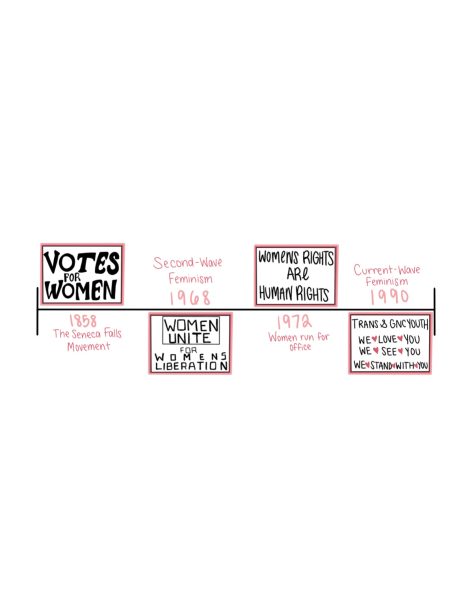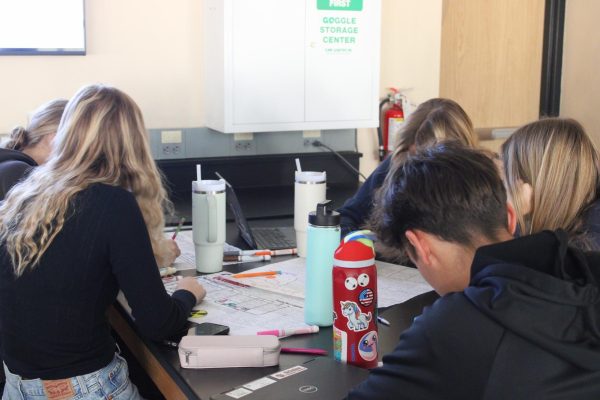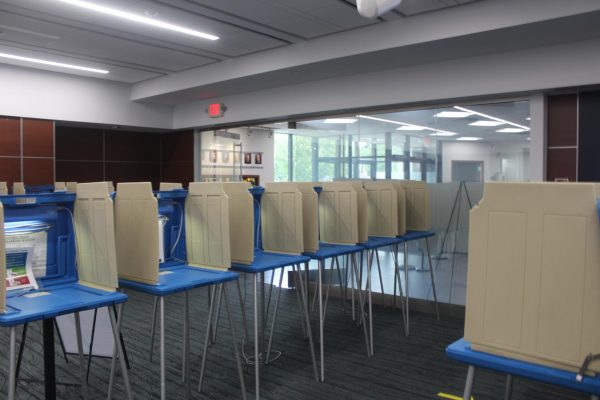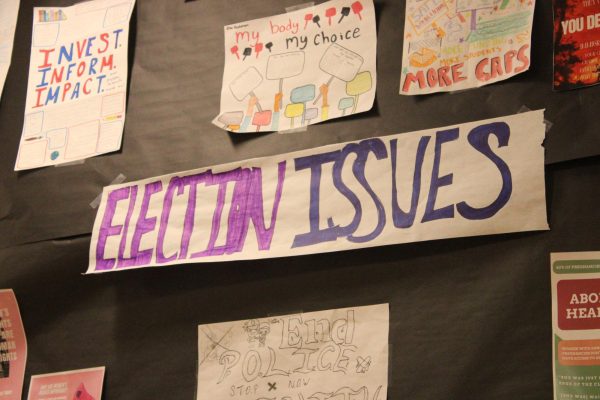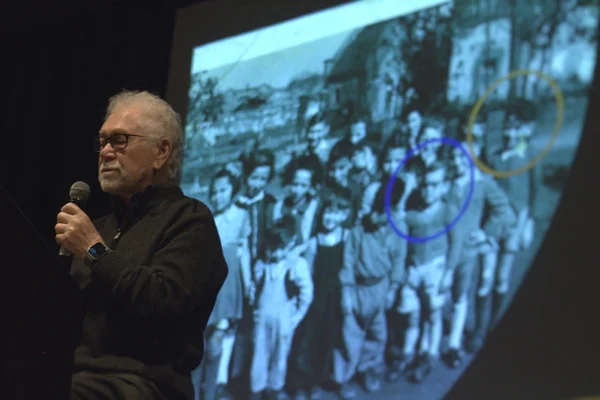Blurred Boundaries
Rape culture creates environment condoning sexual violence
“No means yes. Yes means anal.”
A group of freshman pledges to the Delta Kappa Epsilon (DKE) fraternity surrounded a Yale sorority at night chanting these words, according to the Yale Daily News, Oct. 13, 2010.
After this incident was reported, controversy came out concerning whether or not these freshman boys were actually threatening sexual violence.
The DKE national organization ordered the Yale chapter to stop all fraternity activities for less than a month.
No other charges were filed against the fraternity members.
According to Gavin Grivna, assistant director at University of Minnesota’s Aurora Center, this exemplifies the entitlement that comes with rape culture.
What is rape culture?
“The idea of rape culture really is about entitlement and power. It seems to have really a singular narrative: that women are seen as sexual objects and less than those who identify as men and masculine,” Grivna said. “The problem with that is that it leads to people seeing and not recognizing how traumatic rape is as an experience, but also how prevalent rape is in our society.”
Examples of rape culture appear in the media, particularly in the music industry where lyrics often get away with normalizing rape and supporting the idea of objectifying women.
“Blurred Lines” by Robin Thicke, the longest running number one single of 2013 according to Billboard.com, demonstrates the media’s ability to glamorize sexual assault and distract listeners from the lyrics, which condone sexual assault.
“The phrases that are saying ‘I know you want it,’ make the assumption that you have consent,” Grivna said. “It’s really illustrating violence against women and making that OK in a fun, playful way in this video where everyone’s smiling and dancing around.”
The media’s glorification of sexual assault paints an unrealistic picture of rape and minimizes the trauma the victim experiences, Grivna said.
According to a 2014 study conducted by the Centers for Disease Control and Prevention (CDC), an estimated 19.3 percent of females and nearly 7 percent of males within the United States have been raped during the course of their lifetime.
Health teacher Allison Luskey said she witnesses rape culture in the high school and notices a casual tone accompanying it.
“What I’ve seen that has changed in the past few years is sort of subtle, but (rape culture) comes out in conversations and has kind of become more of norm talk,” Luskey said. “I still feel like rape is not taken with a serious undertone.”
Senior Shoshi Fischman, one of the founders of the Sexual Health Education Club (SHEC), said she agrees and thinks many students may not know the extent to which rape culture affects them or how they might unintentionally contribute to it.
“I think that St. Louis Park is very well educated compared to other high schools, but I still think it’s not where it should be,” Fischman said.
Junior Idris Hussein said he hears others contributing to rape culture verbally both in person and on social media, whether the connection with rape is consciously there or not.
“Usually it’s about sports games or academics,” Hussein said. “My friend will say ‘I pounded that so hard.’ It’s not OK.”
Examples in high school
Thousands of examples of verbal representation of rape culture commonly show up on Twitter with a simple search. Examples include: “The math test today raped me and there’s no coming back from that,” “That other team? I easily raped them.”
In addition to social media, rape culture appears in many other forms, such as movies, television shows, advertising and music.
Luskey said she remembers listening to “Blurred Lines” and thought the song was catchy, fun and upbeat.
“When you really take a look at the lyrics of the song it crosses every line of what I stand for,” Luskey said. “There are some campaigns that are coming out about stopping (rape culture) but at the same time we’re hearing a mixed message from the media. There’s so much confusion there.”
Luskey said senior year health class focuses around preparing students for life after high school. She said she leads class discussions about consent, boundaries and safety.
“The piece that without question has to be discussed too is safety when somebody is on their own, especially when there’s alcohol or marijuana or drugs,” Luskey said. “We’re really looking at some real strategies on what we would want people to do to keep themselves safe when talking about the party scene.”
The SHEC focuses on peer-to-peer education, and although the club does not have meetings focused specifically on rape culture, Fischman said the topic is discussed almost every meeting.
“(Rape culture) is going to be more embedded in everything else that we’re doing,” Fischman said. “We try and pick topics teens are already talking about and show them how embedded rape culture is in their lives.”
Fischman said she thinks because rape is constantly reinforced in the media, teenagers think it’s normal, which is not the case.
“It says to teens that if the media is allowed to victim blame and trivialize assault then so are they,” Fischman said. “Just because you see this as the norm in the media doesn’t mean it’s the way it should be.”
Transition to college
For a large population of the student body, the upcoming months or years will involve transitioning onto a college campus.
Based on statistics from the National Sexual Violence Resource Center in 2011, one in five women experiences rape or attempted rape while in college.
According to Tracy Deutsch, a professor of gender, women and sexuality studies at the University of Minnesota, the increased independence and lack of constant supervision that comes with college contributes to the widespread presence of rape culture on college campuses.
However, she said she thinks the views of women and violence are not taken seriously enough in high school, which leads students to further perpetuate rape culture in college.
“There’s a lot more autonomy in college and places where there’s less supervision where assault can happen later. Having said that, I think the ideas and the beliefs that allow assaults to happen come in high school and then are exacerbated on college campuses,” Deutsch said.
For Fischman, the idea of transitioning onto a college campus next year comes with hesitation because of potential assault occurring there.
“It’s nerve-wracking because walking down the street is intimidating if you’re a woman in today’s culture. So especially on a college campus where drinking is a thing and people are not very close. It’s just scary,” Fischman said.
In addition to the sexual assault itself, another aspect of rape culture in college is the potential fear of reporting it and talking about it with others, which may cause shame and humiliation from peers, according to Deutsch.
“You lose your anonymity. You have to deal with people questioning your truthfulness. You might have to confront the assaulter, and there’s an enormous amount of skepticism on your claim of what you were doing to cause the assault,” Deutsch said.
Grivna said he thinks students should look into the nature of rape culture and sexual assault prior to moving onto a college campus in order to ensure safety and increase awareness.
“I think it is very important to have students and people as they’re transitioning to a new environment to learn more about what that climate is like,” Grivna said. “In particular, what exists at the college for support services, for advocacy and violence prevention.”
Combatting rape culture
In order to raise awareness within the high school, Luskey said she thinks three main concepts need to be addressed: consent and what it entails, establishment of personal boundaries and safety when looking at the party scene.
“If anything, what would come out of rape culture is really addressing the issue and the problem. What it is. What healthy sexuality looks like. What “no” looks like. What “yes” looks like and sounds like,” Luskey said. “Really defining that and teaching students to put in their boundaries and respect each others’ boundaries is really important.”
Fischman said she thinks it’s important for teens to take active roles in these conversations instead of just adults leading them. This creates a less intimidating atmosphere to discuss the topic.
“I think that peer-on-peer education is a lot more intellectual more than teacher-student, because we can have more of a conversation, not just a lecture,” Fischman said. “You tell people your stories and they learn from your experiences instead of just being told not to do something.”

I will be manning the In-Depth page this year and hope to provide controversial and factually solid stories every issue to encourage readers to re-evaluate...

“Heartbreakers gonna break break break… Haters gonna hate hate hate… But I’m just gonna shake shake shake…” Taylor Swift, one of my main role...



